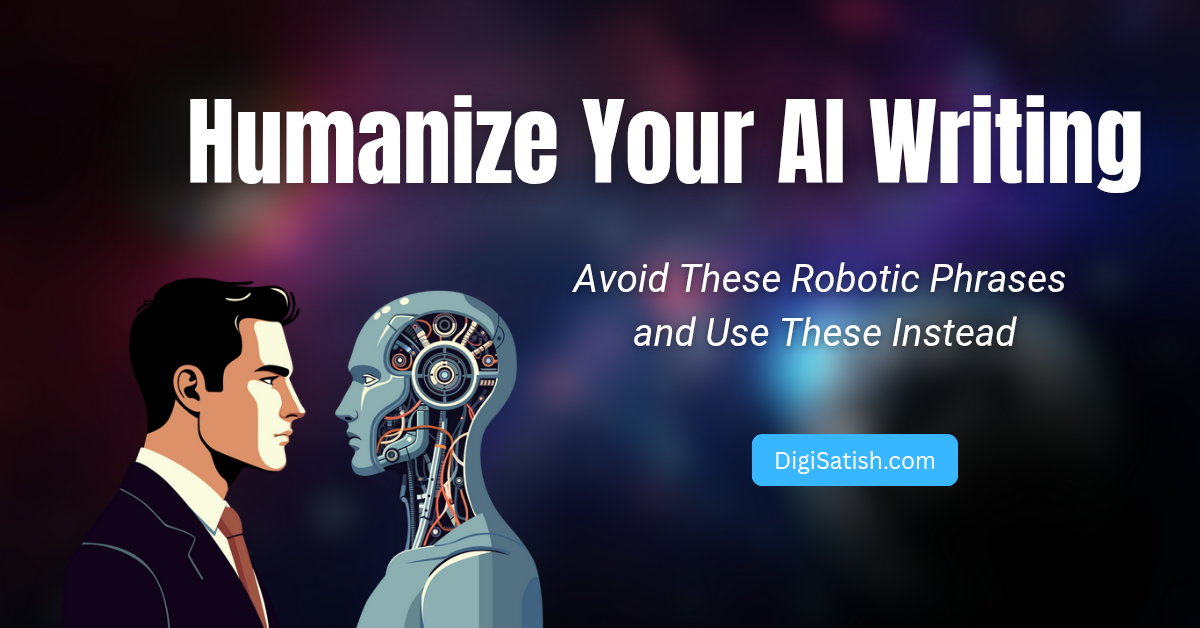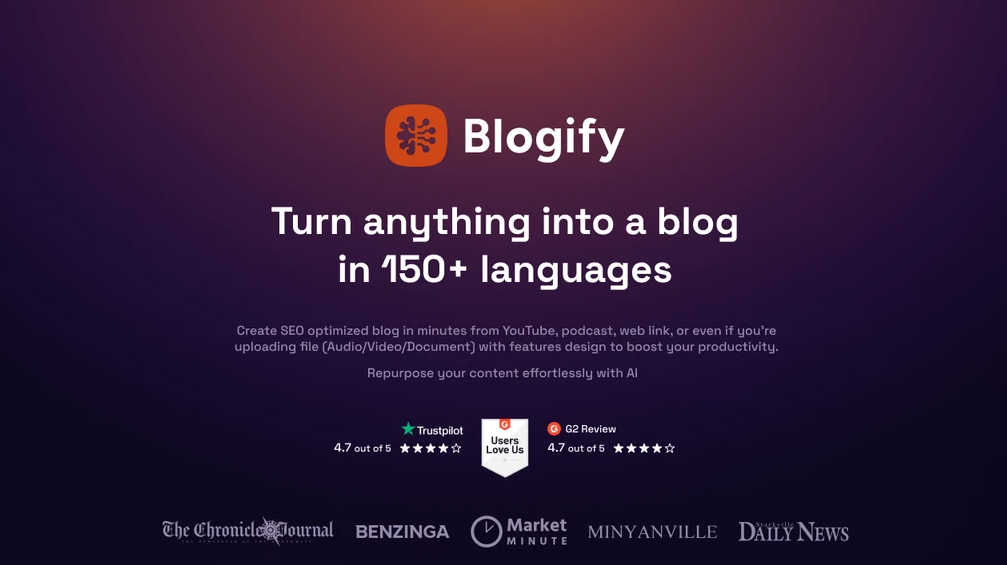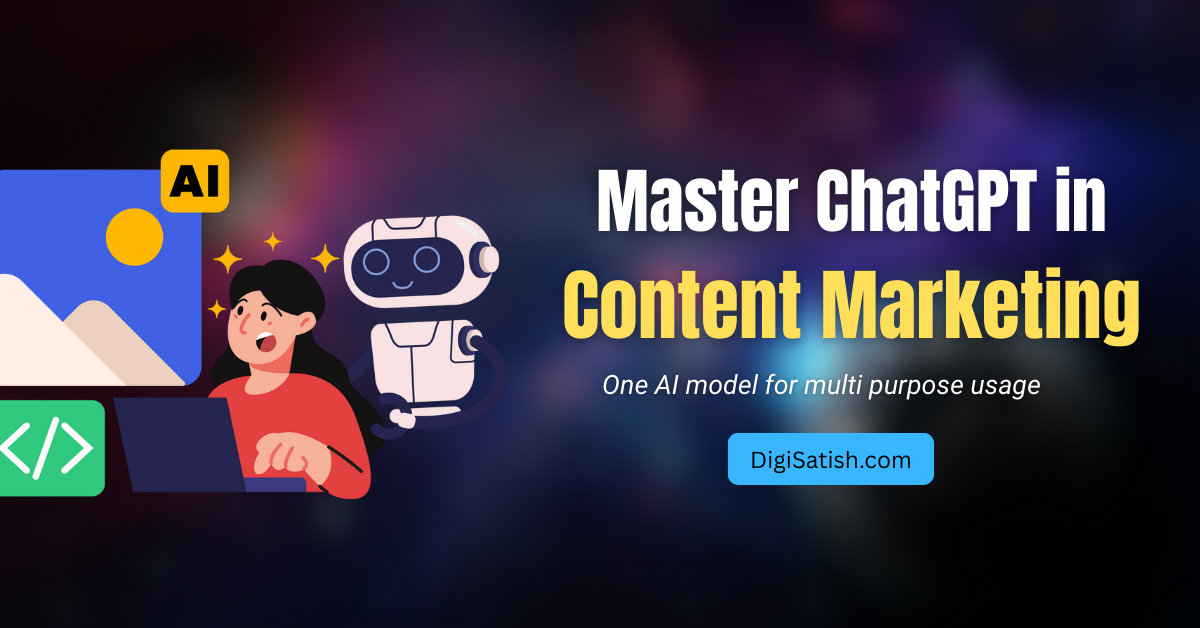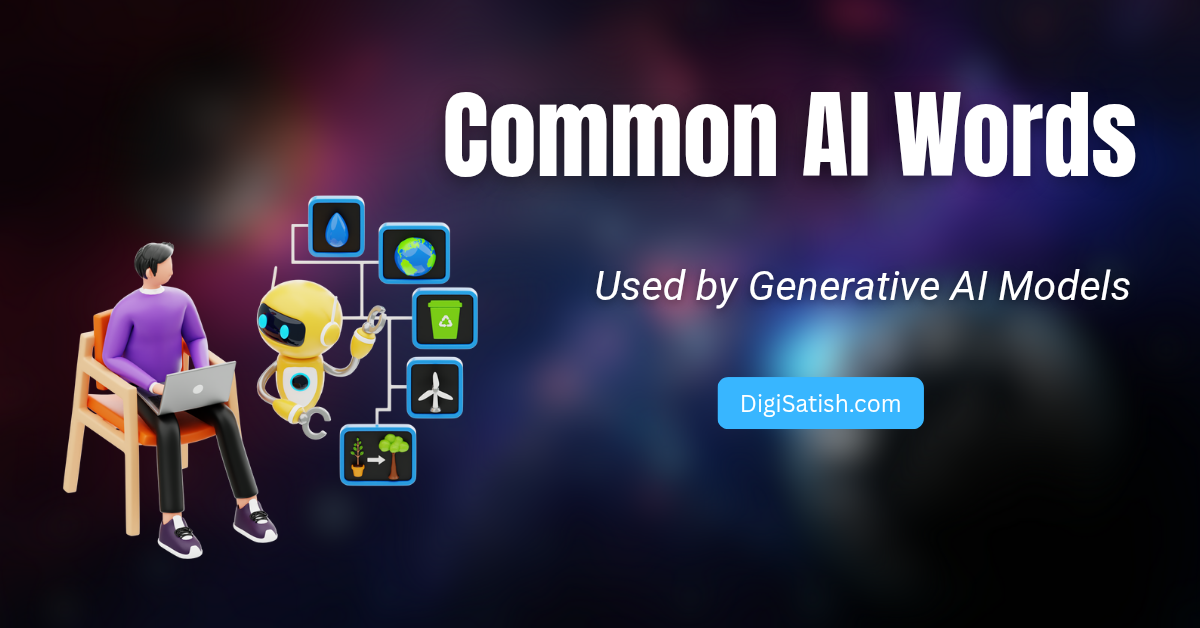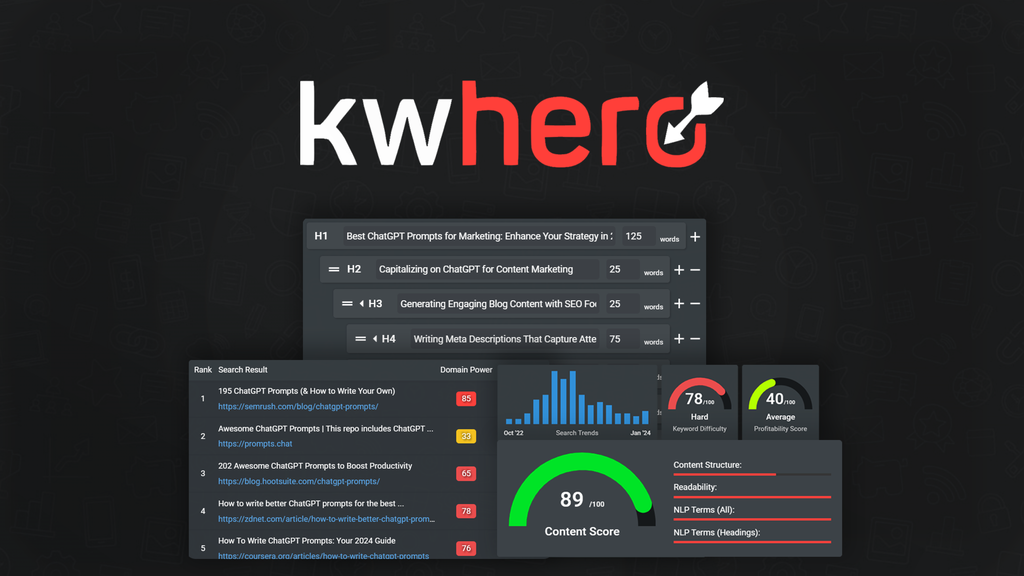AI has changed content creation. From blog posts and social media captions to email newsletters, AI writing tools like ChatGPT, Jasper, and Copy.ai have made it faster and easier than ever to creating content. But while speed and efficiency are impressive, there’s one major downside: most AI content lacks soul.
Let’s face it—readers can tell when something “feels” written by a robot. It’s often too formal, too structured, and sometimes just… off. There’s a magic in human writing—the subtle nuances, the emotional hooks, the relatable tone—that AI still can’t replicate.
That’s where humanizing your AI content comes in.
You need to add a layer of human authenticity. This is important if you’re a blogger, marketer, or business owner using AI to boost productivity. It will help your content. This step is key. It will help you connect with your audience. Additionally, it will improve engagement, build trust, and boost your SEO. Google prioritizes helpful and natural-sounding content.

In this post, we’ll discuss practical ways on how to humanize AI-generated content. We’ll discuss how to adjust the tone and add emotional triggers. We’ll also discuss storytelling and adding personal touches. By the end, you’ll have a clear process for creating engaging content. You’ll know how to turn robotic drafts into relatable and engaging content that will resonate with your audience.
How to Humanize AI-Generated Content
How to understand Your Audience First?
First and foremost, understand your audience. Please ensure you thoroughly research before beginning to edit or humanize your AI content. Your writing will fail if it doesn’t speak directly to the reader’s needs. It must also speak to their values and emotions. No matter how polished it is, it will still fall flat.
AI tools can produce grammatically correct paragraphs, but they don’t inherently know who your audience is. That’s your job. It starts with creating audience personas. These are profiles that define your ideal reader based on their interests and pain points. They also consider search intent, behavior patterns, and content tone.
Why Audience Understanding Matters
When you humanize content, you’re not just tweaking grammar or fluffing up sentences. You’re shaping the message to resonate with real people. First, align your voice with their expectations. Use the language they understand. Address the emotional triggers that influence their decisions.
Ask yourself:
- What problems are they trying to solve?
- What kind of language do they relate to—professional, casual, witty, or motivational?
- Are they beginners looking for clarity or experts expecting depth?
- What keywords or phrases do they commonly search for?
When you answer these questions, you’re not just guessing. You’re building the foundation for personalized, engaging content that feels human from the very first line.
Tips to Know Your Readers Better
- Use tools like Google Analytics, Hotjar, or SurferSEO to see how users interact with your pages.
- Check out forums, social groups, and comments in your niche for real voice-of-customer insights.
- Survey your readers or email subscribers to get direct feedback on what kind of tone and content they prefer.
How to Use This Insight in Humanizing AI Content
Once you know your readers well:
- Adjust AI content to match their tone—make it more conversational, more authoritative, or more empathetic.
- Use their common phrases, idioms, or slang where appropriate to make it feel like you’re one of them.
- Please center your message on addressing the reader’s problem, rather than simply providing information.
Human-centered content starts with empathy. The more you align your content with your readers’ expectations, the more engaging and authentic it becomes.
How to Adjust the Tone of Voice
AI-generated content can be easily identified by its flat, overly formal, or generic tone. AI can mimic writing styles to some extent. However, it often fails to capture the nuanced voice. This nuance makes your brand or blog truly human.
To improve content engagement and build trust with your readers, you need to tailor the tone of voice. It should match your audience’s expectations. It should fit the context and emotional state. Such an approach humanizes your writing and helps in creating brand-consistent content that resonates across platforms.
What Is Tone of Voice in Content Writing?
The tone of voice is how your content “sounds” to the reader. It’s not just what you say, but how you say it. For example, you can express the same idea in vastly different ways. It depends on whether you want to sound professional, casual, inspirational, or witty.
AI often defaults to a neutral, instructional tone—perfect for manuals, not for blogs, social media, or marketing. So, it’s your job to give it a voice that your audience loves.
Examples of Common Tone Styles
- Conversational: Let’s face it—writing with AI can feel a little stiff.
- Professional: Optimizing AI-generated content for clarity and precision is crucial.
- Empathetic: We understand how frustrating it is to publish content that doesn’t feel authentic.
- Energetic: Time to ditch the robotic vibes and make your words pop!
How to Adjust AI-Generated Tone
- Review the AI Draft for Tone Consistency: Look out for sentences that sound too robotic, formal, or unnatural. These often use passive voice, filler jargon, or awkward transitions.
- Rewrite Sentences Using Natural Language: Use contractions (you’re, it’s, don’t), rhetorical questions, and simple phrasing. Break down complex structures into conversational snippets. This method enhances readability and audience connection.
- Infuse Your Brand Voice: Whether your brand is playful, thoughtful, or edgy—let that shine through. Your tone should be instantly recognizable. Tools like Grammarly or Writer.com offer tone detection to help you refine this.
- Try reading it aloud: if it doesn’t sound natural, it likely requires improvement. Natural speech patterns are key to tone alignment.
Semantic Triggers to Improve Tone Naturally
Use phrases like
- Here’s the thing…
- Let’s break the details down.
- Sounds familiar?
- You’re not alone.
These phrases not only humanize your text but also build reader rapport and boost on-page engagement.
Tone of Voice = Emotional Connection
Your tone should match your audience’s mindset. This sparks emotional engagement. It leads to longer time on page, more shares, and higher conversion rates. That’s why tone optimization isn’t just a writing hack—it’s an essential content strategy.
Add Emotional Triggers
One of the most powerful ways to humanize AI-generated content is by adding emotional depth. AI cannot often connect on a human level, producing flat, factual text that doesn’t evoke any feelings. But excellent content isn’t just informative—it’s emotionally resonant.
People don’t just read content—they feel it. Emotions drive clicks, shares, comments, and conversions. If you want your audience to engage, remember this: emotion beats logic every time.
What Are Emotional Triggers in Content Writing?
Emotional triggers are specific words, phrases, or storytelling elements. They activate a reader’s feelings, such as curiosity, fear, joy, anger, nostalgia, or inspiration. They create a connection between your message and the reader’s personal experiences.
When used thoughtfully, emotional triggers can transform robotic content into a powerful communication tool that captures attention and inspires action.
Types of Emotional Triggers to Use in Your Content
Fear of Missing Out (FOMO)
1. Don’t miss your chance…
2. Here’s what most people forget to do…
These phrases tap into urgency and the desire to stay ahead.
Inspiration & Empowerment
1. You’ve got this.
2. Take control of your success.
These phrases tap into urgency and the desire to stay ahead.
Curiosity & Intrigue
1. What happened next will surprise you…
2. Few people know this, but…
These drive click-through rates and boost dwell time.
Empathy & Relatability
1. We know how frustrating it can be…
2. If you’ve ever struggled with this, you’re not alone.
Such statements build trust and strengthen the reader’s connection.
Social Proof & Belonging
1. Thousands of people are already using this tool.
2. Join a community of like-minded creators.
These appeal to the need for validation and belonging.
How to Insert Emotional Triggers into AI Content
- Identify flat, mechanical phrases and replace them with emotionally charged alternatives.
- Use power words like struggle, breakthrough, effortless, heartwarming, shocking, or disaster, depending on your goal.
- Combine emotional triggers with storytelling, real-world examples, or personal anecdotes for deeper impact.
Example: Before vs. After
Before (AI-generated):
Here are five tips to improve your writing.
After (Humanized with emotion):
Struggling to make your writing actually connect with readers? These five tips might be the breakthrough you’ve been looking for.
That small change adds urgency, empathy, and connection—three things robots don’t do well.
SEO Tip: Emotional triggers can improve click-through rate (CTR) when used in titles, meta descriptions, and intro paragraphs. Phrases like “The truth about…”, “You won’t believe…”, or “This one simple trick…” create curiosity that drives traffic.
Adding emotional triggers makes your content more human. It also improves user engagement, boosts social sharing, and increases content conversion rates. When you write for emotion, you write for real people—not just algorithms.
Infuse Storytelling Techniques
When it comes to humanizing AI-generated content, one of the most effective methods is through storytelling. Stories give your content depth, emotion, and authenticity—qualities that AI often struggles to replicate. AI can generate facts and listicles. However, it lacks the real-life experiences and nuanced perspective that come from being, well, human.
Storytelling in content marketing transforms flat information into engaging narratives. It helps readers visualize ideas, build emotional connections, and remember your message. It’s not just about what you say, but how you make them feel through the journey.
Why Storytelling Works in Humanized Content
- Creates emotional resonance: Real or relatable stories trigger empathy and shared experience.
- Boosts memory retention: People remember stories 22x more than facts alone.
- Builds trust and credibility: When you share genuine experiences, readers are more likely to believe and connect with you.
- Improves dwell time and engagement: Readers are more likely to stay on the page when they’re drawn into a narrative.
Types of Stories You Can Use
- Personal Stories: Share a relatable challenge, failure, or success. This brings vulnerability and personality to your writing.
- Customer Stories or Testimonials: Use real-world use cases and social proof to demonstrate value and authenticity.
- Origin or Brand Story: Show where your product, service, or idea came from. It helps build brand identity and emotional alignment with your audience.
- Metaphors and Analogies: Transform complex topics into simple, relatable concepts. For example: “Using AI without human input is like baking with no recipe—you might get lucky, but it’s risky.”
How to Add Storytelling to AI-Generated Content
- Start with a hook: Introduce a scenario, conflict, or problem that draws the reader in.
- Introduce a character (even yourself): Make it about a person, not just a process.
- Build tension or curiosity: Highlight struggles, obstacles, or surprises along the way.
- Deliver a resolution or insight: End with a takeaway that ties back to your topic and gives the reader value.
Example: Before vs. After
Before (Generic AI output):
Consistency is key to content success.
After (Humanized with storytelling):
I still remember publishing blog posts week after week and seeing zero traffic. It was frustrating—until I realized consistency wasn’t just about posting regularly, but about delivering value every single time. That small mindset shift changed everything.
Pro Tip for SEO & Engagement: Blend storytelling with target keywords. Use semantic search terms like “real-life example,” “true story,” “lesson learned,” and “case study.” This technique makes your content not only relatable but also more discoverable by search engines looking for contextual relevance.
Infusing storytelling into your AI content makes your message more memorable, trustworthy, and emotionally engaging. It’s how you turn robotic paragraphs into compelling narratives that spark interest and loyalty.
Edit for Natural Flow and Voice
Even the most advanced AI writing tools often produce content that feels rigid, formulaic, or unnatural. That’s why editing AI-generated content is one of the most crucial steps in the process of humanizing digital content. The goal is to refine the copy. It should sound like it was written by a real person. It should have a unique tone of voice, conversational rhythm, and authentic expression.
Why Natural Flow and Voice Matter
- Improves readability and user experience: When content sounds natural, it’s easier and more enjoyable to read.
- Establishes brand personality: Your tone and flow help differentiate your content marketing voice from generic AI output.
- Boosts SEO performance: Search engines favor content that offers clarity, relevance, and high user engagement.
Key Elements to Focus On During Editing
- Sentence Structure and Rhythm: AI-generated text often has repetitive sentence patterns. Break it up. Use short sentences for impact. Mix in longer, flowing sentences for balance. This technique creates a natural cadence that mimics human speech.
- Tone of Voice: Adjust the tone to match your audience and brand. Whether it’s friendly, professional, witty, or empathetic, maintaining a consistent brand voice is essential for content authenticity.
- Contractions and Colloquialisms: Incorporate contractions like you’re, it’s, don’t, etc., and use everyday language. This small change makes the content sound more human and conversational.
- Remove Redundancy and Jargon: AI may repeat ideas or include awkward phrasing. Trim the fluff, simplify complex expressions, and aim for clarity.
- Use Transitional Phrases: Words such as “however” can contribute to a more fluid content flow. Conversely, transitional phrases like “in contrast” can also aid in this process. They improve the readability of your content. These words help readers follow your ideas more easily.
- Read it aloud: This step is one of the best ways to ensure your content flows naturally. If it sounds robotic or stiff when spoken, it needs polishing.
Before vs. After Example
Before (Raw AI):
AI-generated content can save time. It can also increase productivity. You need to edit it.
After (Humanized with natural flow):
Sure, AI content tools can save you tons of time. They can also boost productivity. However, to truly benefit, you must know how to fine-tune what they create. That’s where editing for natural flow comes into play.
Editing for natural flow and voice brings your content to life. Editing for natural flow and voice can be crucial. Your content should not sound robotic. It should sound like someone your audience would actually trust, follow, and engage with. This step takes time, but it’s the polish that turns machine-written content into high-performing, human-grade writing.
SEO Tip: As you revise, integrate LSI keywords (latent semantic indexing terms). Use terms like natural language processing, human tone, conversational copywriting, and personalized content. These signal relevance and topic depth to search engines without sounding keyword-stuffed.
Optimize for Reader Intent and SEO
Your AI-generated content must first be humanized with tone, storytelling, and flow. Then, ensure it serves the reader’s intent. It should also be SEO-friendly. It’s not just about inserting keywords anymore. It’s about aligning your content with what people are searching for. Deliver real value in a format they want.
Why Reader Intent is Key to SEO Success
Search engine algorithms have evolved. Google now prioritizes content that satisfies user intent. Your content must answer questions. It should match the search context. It must deliver helpful, relevant information. If someone lands on your page and bounces because it’s not what they needed, your rankings suffer.
Matching search intent—whether informational, transactional, navigational, or commercial—is what separates optimized content from the rest.
How to Optimize AI Content for Intent and SEO
- Identify and Match Search Intent: If your keyword is how to humanize AI content, the reader likely wants actionable tips. They are not just interested in theory. Structure your post to deliver practical steps with examples.
- Use Natural Language Keywords: Incorporate semantic SEO keywords. Include phrases like human-sounding content, AI content personalization, engaging blog posts, natural tone, and reader-friendly copy. These make your article more contextually relevant and boost its ability to rank for long-tail queries.
- Structure with Scannable Formatting: Break content into headings, bullet points, and short paragraphs. Use H2 and H3 that match common questions or phrases users type into search bars. Think:
- How do I make AI-generated content sound human?
- Tips to humanize AI writing
- Add Internal and External Links: Link to your other relevant posts. This step creates a strong internal linking structure. It improves crawlability and SEO authority. Add outbound links to trusted sources to boost credibility and contextual relevance.
- Include Optimized Meta Data and Image Alt Text: Ensure your meta title aligns with your target keyword. Please ensure that your meta description and image alt tags are aligned in the same way. They should support accessibility and follow on-page SEO best practices.
- Incorporate Visual Elements: Charts, screenshots, infographics, and videos enhance engagement. They also reduce bounce rate and improve user experience metrics. These are factors Google uses to rank pages.
- Use Schema Markup Where Applicable: Add structured data to make your content eligible for rich snippets. This can increase the click-through rate (CTR) in search results.
Example: Optimizing a Humanized Paragraph
Before (Raw AI):
Humanizing AI content is important. You can improve it by adding emotion and personal stories.
After (optimized for SEO and reader intent):
To truly humanize AI-generated content, start by injecting emotional depth and real-life stories. These techniques not only improve audience engagement. They also align your copy with reader expectations. Such an approach is a key factor in content optimization for SEO.
The final step involves optimizing for reader intent and SEO. You’ve transformed your AI draft into something that feels human. Now, make sure it ranks well. It should deliver value to the right audience. After optimizing for SEO and reader intent for algorithms or people, it’s written with both in mind.
Add Personal Insights and Real-Life Examples
One of the most powerful ways to humanize AI-generated content is to inject it with personal experiences. Use real-world examples and original commentary. This type of approach creates a genuine connection with the reader. It transforms generic text into something authentic, trustworthy, and memorable.
Why Personalization Makes Content More Human
AI can replicate tone and structure, but it lacks personal memory and emotional context. When you add your insights, you not only boost credibility but also build relatability and trust. Readers want to hear from real people, not just machines. That’s why authentic storytelling and original perspectives play such a critical role in content creation.
Adding these elements also improves content uniqueness, a key factor in SEO rankings and avoiding duplicate content issues.
How to Add Personal Touches to AI-Generated Content
- Include First-Person Narratives: Use phrases like “In my experience.” You can also say, “Here’s what worked for me” to make the content feel more personal. Sharing your journey gives the reader something real to relate to and signals human authorship.
- Tell Relatable Stories: Add anecdotes or case studies that reflect a real situation. Personal examples enhance emotional engagement. They keep readers hooked, whether it’s about content marketing, using AI tools, or facing creative blocks.
- Use Details: Avoid vague statements. Replace them with concrete examples, stats from your projects, or actual client feedback. This technique increases content authority and makes your writing feel grounded and real.
- Reflect on Lessons Learned: Share both wins and mistakes. Honest reflection builds transparency and trust, two major ingredients in human-centric content.
- Quote Industry Experts or Thought Leaders: Supporting your insights with expert quotes not only builds topical authority. Additionally, it aligns your content with EEAT (Experience, Expertise, Authority, and Trustworthiness). This alignment is a key factor in modern SEO.
Example: Transforming AI Text with Real-Life Insight
Before (Raw AI):
Using emotional language can help improve engagement.
After (Humanized with Insight):
When I started using emotional storytelling in my blog posts, the engagement rate jumped by 40%. I described the stress of launching my first product. Readers commented, shared their stories, and spent more time on the page. This firsthand experience showed me how much emotional connection matters in content strategy.
Semantic Keywords to Weave In Naturally:
- Firsthand experience
- Story-driven content
- Emotional storytelling
- Human-written blog posts
- Authentic content examples
- Personalized digital content
- Real-world application of AI content
By adding personal insights and real-life examples, you breathe life into AI-generated text. These additions make your content feel unique, engaging, and written with a purpose. Ultimately, it’s this human layer that encourages readers to trust your voice, follow your brand, and take action.
Conclusion: Embracing the Future of AI with a Human Touch
In today’s fast-paced digital world, AI-generated content offers incredible efficiency and scalability. We’ve explored the key to creating truly engaging and effective content. It lies in blending AI power with the human touch. By following the strategies outlined in this guide, you can transform robotic text into authentic, reader-friendly copy. This copy resonates with your audience by adjusting the tone. It uses emotional triggers, tells stories, and is edited for natural flow.
The Ongoing Balance Between AI and Human Creativity
While AI undoubtedly revolutionizes content creation, it should never completely replace human creativity and judgment. The best content blends the speed and precision of AI with the emotional intelligence and intuition of human writers. As AI technology continues to evolve, balancing these elements will be crucial. This balance is important in maintaining engagement, trust, and authority in your content marketing strategy.
- Crafting emotionally intelligent content will help your brand stand out in a world flooded with machine-generated material.
- Using real-life examples and personal insights will ensure your content remains relatable, building lasting relationships with your audience.
- Editing for natural flow and voice will ensure your content ranks well. It will also deliver value to readers. Combined with SEO, this approach improves both user experience and search visibility.
Next Steps for Content Creators
As you move forward in integrating AI into your content creation workflow, consider these next steps to further humanize your content:
- Experiment with AI Tools: Explore advanced AI content generators to create high-quality drafts. Then focus on human editing and refinement. This approach ensures the final output aligns with your unique voice.
- Engage with Your Audience: Always keep your audience in mind. Use feedback, comments, and social media interactions to refine your tone and messaging. This approach ensures it stays relevant. It also makes it valuable to your followers.
- Keep Evolving Your Strategy: Stay informed about emerging trends in AI content creation. Remember that authentic human engagement will always be a fundamental part of building trust and loyalty with your audience.
Final Thoughts
Humanizing AI content is more than a tactic. It’s a must for great content. This approach produces extremely engaging content that ranks highly. It builds relationships with your audience. By doing this hybrid approach, you can take your content to new levels. This approach will put you at the forefront of an automated world.
By focusing on personal anecdotes, real-life examples, and human-edited content, your content will connect more with your readers. As you continue to refine your AI content, remember: the future of content isn’t just about AI. It’s about using AI to supercharge human creativity and connection.
Frequently Asked Questions (FAQs)
What does it mean to humanize AI-generated content?
Humanizing AI content means making it sound more natural, relatable, and engaging. It involves adding emotional depth. Storytelling and a personalized tone also play a significant role.
Why should I humanize AI content?
Humanizing AI content helps improve engagement, build trust, and ensure your content resonates with readers, making it more impactful.
Can AI content be too robotic?
Yes, AI content can sound robotic if not properly edited. Humanizing it with tone, emotions, and personalization makes it feel more natural and engaging.
What is the best way to adjust the tone in AI content?
Adjust the tone by using conversational language, incorporating emotional triggers, and ensuring it matches the intended audience’s expectations.
How do I use storytelling in AI content?
Incorporate anecdotes, personal experiences, or relevant case studies to make the content more relatable and engaging for readers.
Does humanizing AI content affect SEO?
Yes, adding value, personalization, and emotional triggers to AI content can improve user experience, which positively impacts SEO rankings.
What are emotional triggers in content writing?
Emotional triggers are words, stories, or examples that evoke emotions like empathy, happiness, or curiosity, making content more compelling.
Can AI-generated content be effective for SEO?
Yes, you can optimize AI-generated content for SEO with proper human editing. It involves including semantic keywords. Additionally, there should be a focus on reader intent.
How can I make AI content sound more natural?
Edit the content for flow. Adjust the sentence structures. Add personal insights or real-life examples to make it more relatable.
Is humanizing AI content important for content marketing?
Absolutely! Humanized AI content fosters better connections with readers, increases engagement, and helps create a lasting impression in content marketing.
Discover more from DigiSatish
Subscribe to get the latest posts sent to your email.
